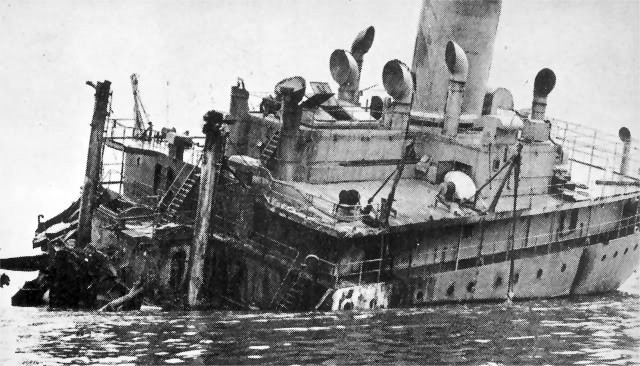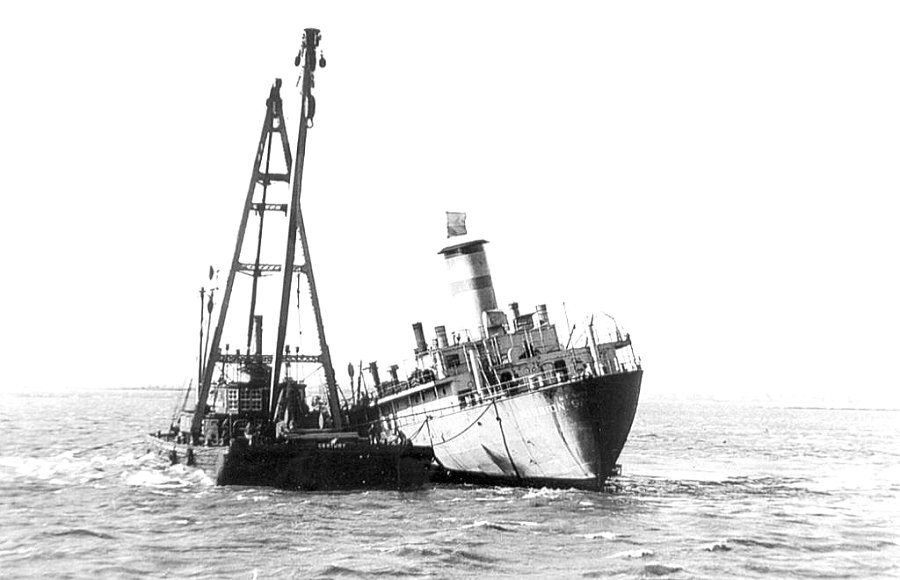Auke Visser's Famous T - Tankers Pages | home
Fatal accident of the USNS Mission San Francisco (T-AO-123)
USNS Mission San Francisco (T-AO-123) was a Mission Buenaventura-class oiler that served in the United States Navy. The ship was originally intended as USS Contoocook (AO-104) for the U.S. Navy but her acquisition was canceled. The ship, a Type T2-SE-A3 tanker, was completed as SS Mission San Francisco and delivered after the end of World War II. The tanker was acquired by the U.S. Navy in 1947 as USS Mission San Francisco (AO-123), but was transferred to the Military Sea Transport Service (MSTS) upon its creation in 1949. During a second stint with the MSTS that began in 1954, Mission San Francisco collided with the freighter Elna II in the Delaware River coast and was declared unsalvageable by the U.S. Navy. The ship was one of two U.S. Navy vessels named for the Franciscan mission of San Francisco de Asís located in San Francisco, California.
Career:
Mission San Francisco was laid down on 5 May 1945 as Contocook under a Maritime Commission contract by Marinship Corporation, Sausalito, California; launched on 18 September 1945, sponsored by Mrs. John J. Manning; and delivered on 11 October 1945. Chartered to Deconhill Shipping Company, upon her delivery, for operations, she served until 14 April 1946 when she was returned to the Maritime Commission and laid up in the Maritime Reserve Fleet at Mobile, Alabama.
Acquired by the Navy on 28 October 1947, she was placed in service with the Naval Transportation Service as Mission San Francisco (AO-123). Taken over by the Military Sea Transportation Service on 1 October 1949 she was redesignated USNS Mission San Francisco (T-AO-123) and served under MSTS until 18 January 1954, when she was returned to the Maritime Administration and laid up in the Maritime Reserve Fleet at Beaumont, Texas.
Reacquired by the Navy on 20 October 1956, she was once again placed in service with MSTS and chartered to Mathiasens Tanker Industries. Her period of service with MSTS was short. On 7 March 1957 while passing New Castle, Delaware, she collided with the Liberian freighter Elna II. The shock of the collision caused Mission San Francisco to catch fire and explode, breaking her in two. The explosion killed 10 men, including her master, Capt. William Allen. Immediately after the collision, Elna II backed off but in her attempts to avoid the burning hulk she ran aground. Due to bad weather, rescue attempts were slow, but all aboard Elna II and the survivors of Mission San Francisco were rescued by the United States Coast Guard. Declared unsalvageable by the Navy, Mission San Francisco was stricken from the Naval Vessel Register on 20 March 1957.
Source : Cannonball Press, Brooklyn, NY
The Mission San Fransisco doesn't get out of the way - and the mistake is deadly
Elna's Captain Calls Naval Vessel 100 Pct. At Fault by Haynes Johnson
The master of the freighter Elna II this morning stated that in his opinion the tanker, Mission San Fransisco, was "100 percent at fault" for the Delaware River collision earlier today. Wihtout sleep for more than 27 hours, Capt. Alexander Kaare of the Elna, told of the tragedy near Deepwater point Range on the Delware.
Captain Kaare, speaking haltingly with a heavy foreign accent, said the Mission San Fransisco "didn't answer our signals and they didn't change course."
A Delaware River pilot, Capt. Henry Rice, who was standing near the wheel at the time of the collision, agreed with Captain Kaare that the Mission San Fransisco was at fault. He said the accident could have been prevented....
"19-year Old Helmsman Had Best View" by Daniel S. Greenberg
"Suddenly I saw the bow of a ship come around in front of us. The pilot ordered full astern. But it was too late. There was a big flash, and then an explosion." George Malvar, a 19-year old Filipino who was at the wheel of the SS Elna when she collided this morning with the U.S.N.S. Mission San Fransisco, sat at the table in the YMCA and described the collision.
The young seaman, who suffered several facial cuts when the winshield of the Elna's bridge was shattered, probably had as good a bird's eye view of the collision as anyone on either vessel.
"I reported to the bridge at 12 (midnight) and relieved the man at the helm. The captain and the pilot were the only others there. The [ river ] pilot was giving orders.
He told the captain to blow the whistle, and the captain blew it. He said 'Starboard,' and I [ turned Starboard ]."
|
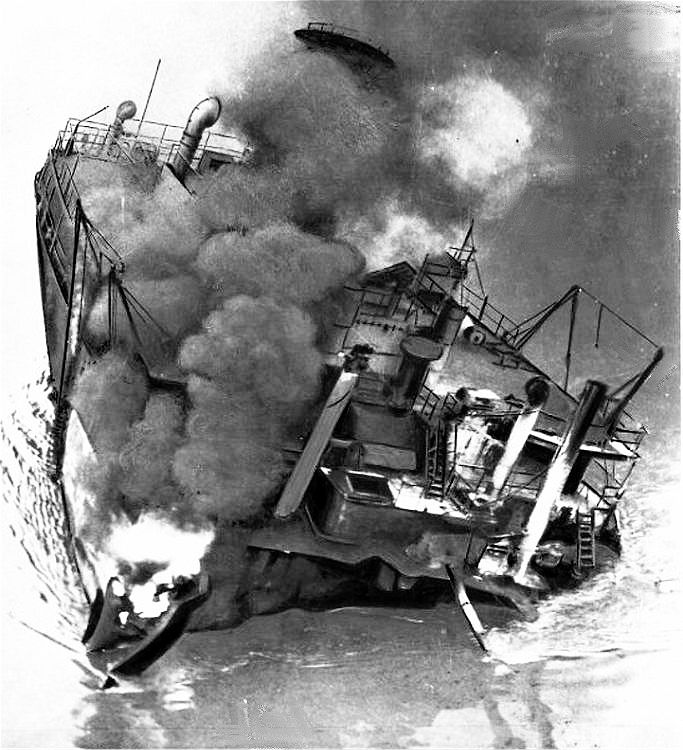
"Mission San Francisco (II)", ex. "Contocook", after collision.
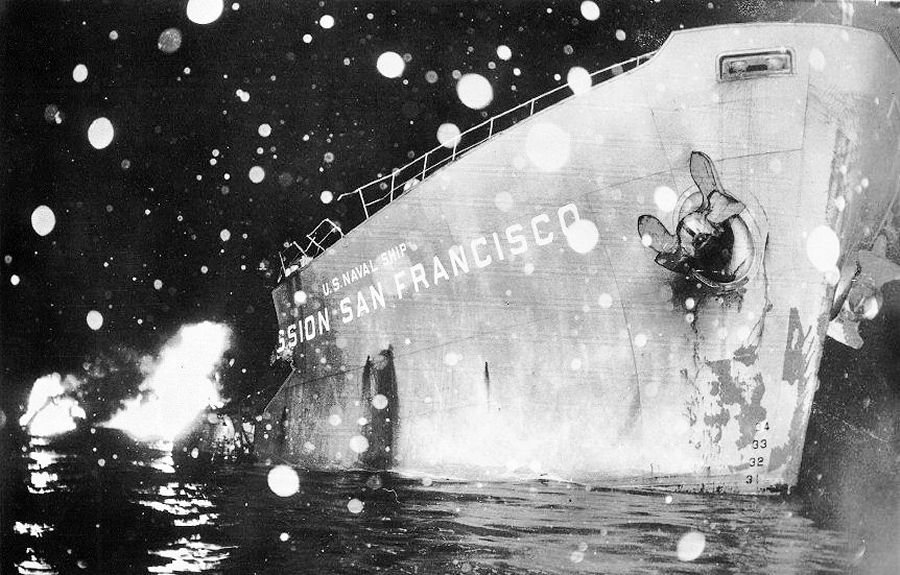
"Mission San Francisco (II)", ex. "Contocook", after collision.
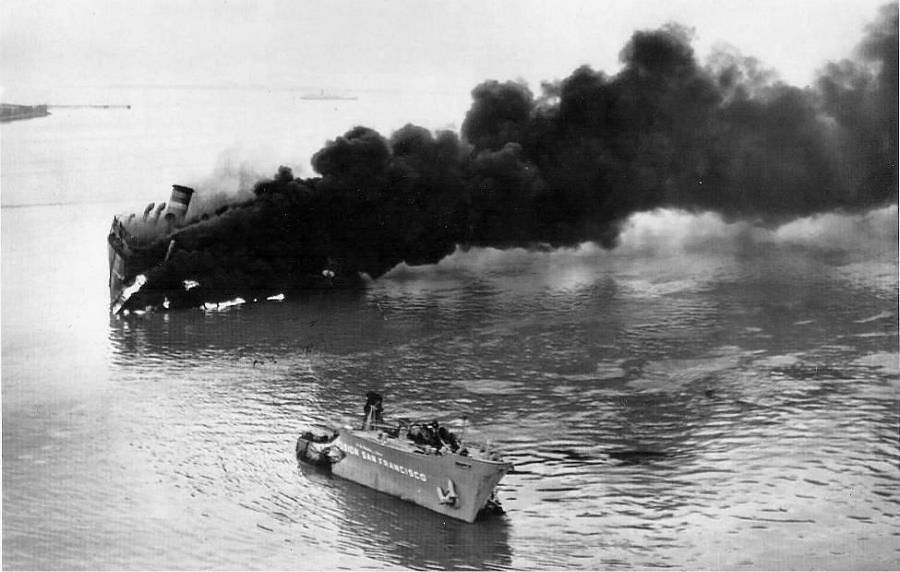
"Mission San Francisco (II)", ex. "Contocook", after collision.
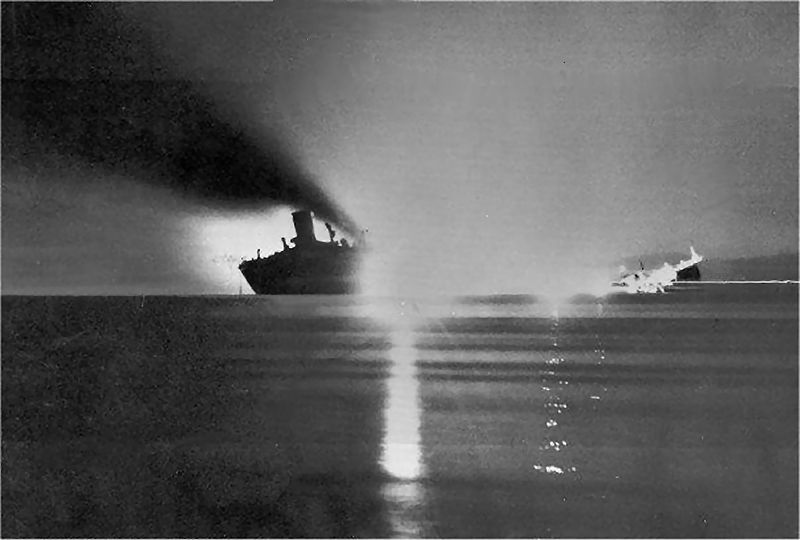
"Mission San Francisco (II)", ex. "Contocook", after collision.
USNS Mission San Francisco (T-AO-123) burns after collision with Liberian freighter SS Elna II
in the Delaware River near New Castle, DE., 7 March 1957. An explosion following the collision
tore the tanker apart. The explosion killed 10 crew men, including the ships' master,
CAPT. William Allen.
( Photo from © "Philadelphia Inquirer" archives )
The stern of the MSTS tanker "Mission San Francisco (II)", ex. "Contocook", after collision with a cargo ship
on the Delaware River in March 1957. In ballast but not gas-freed the tanker disintegrated, leaving only the
extremes of bow and stern intact. Laid down as one of only four vessels of the T2-SE-A3 type, she was
completed with the T2-SE-A2 designation.
Salvage work for the "Mission San Francisco (II)", ex. "Contocook".
( Photo Copyright Hubert Hall, New Brunswick )
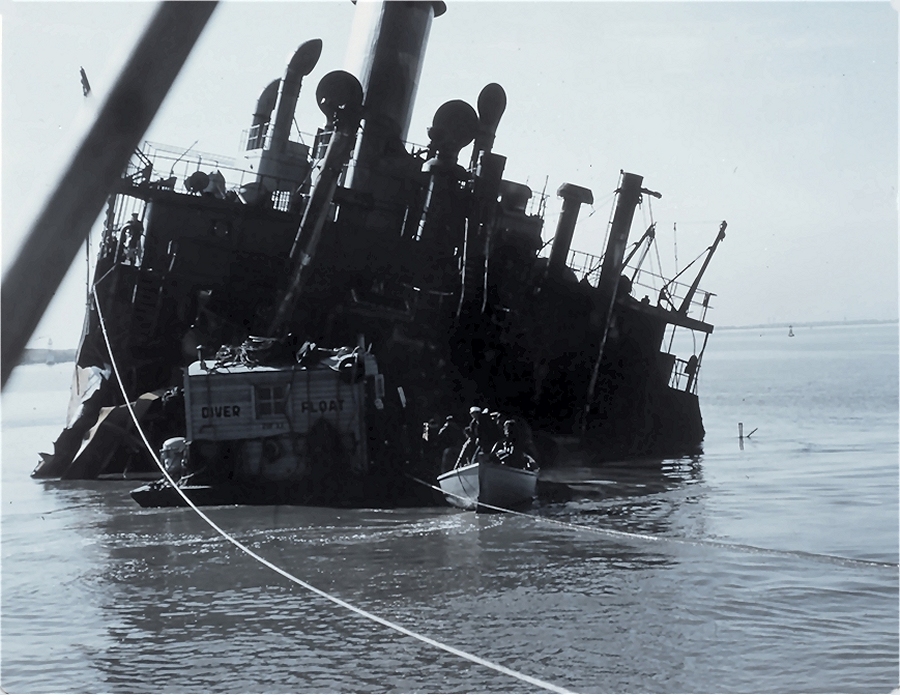
( Photo NARA )
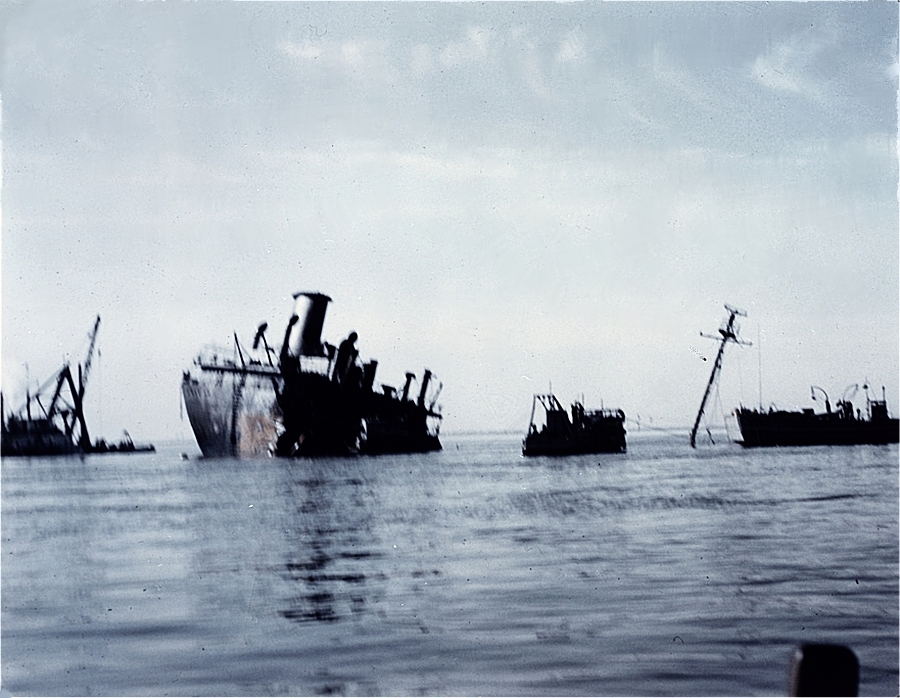
( Photo NARA )
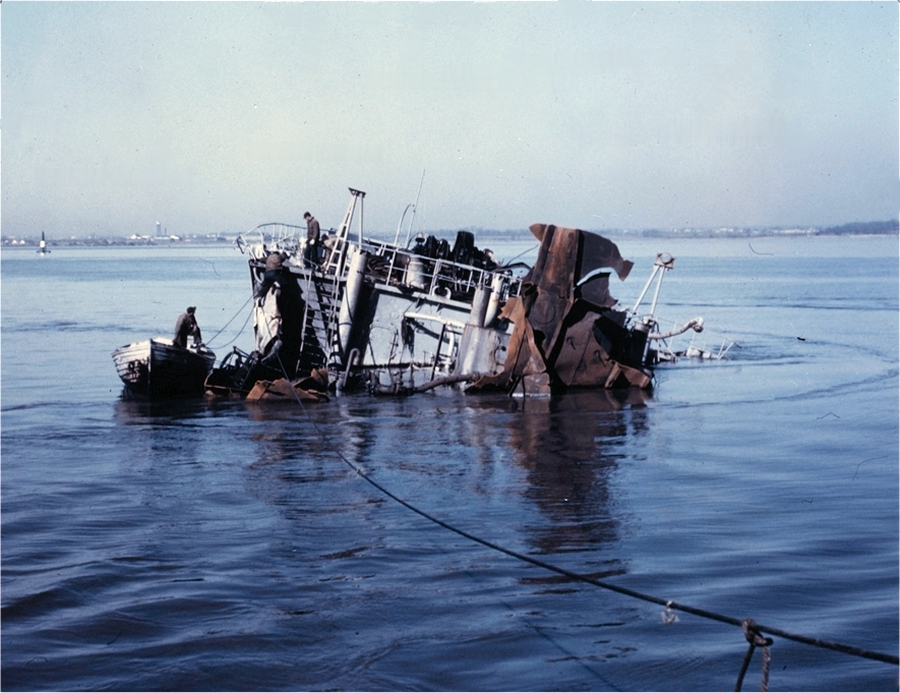
( Photo NARA )
